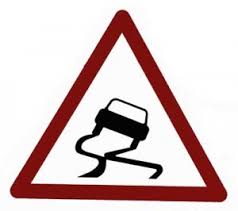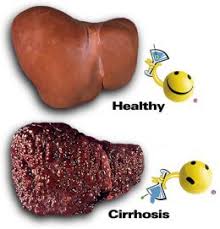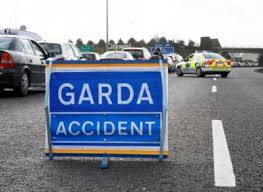Ireland’s Road users are warned over very icy conditions
Road users are being urged to be extremely careful because of icy conditions, with the northwest and northeast worst affected. 

Irish Road users mainly in the north-west are told to slow down to maybe 35km hr. in anticipation of icy conditions
Motorists are being urged to take extreme care on the roads this afternoon, because of icy conditions.Roads in the northwest and northeast are worst affected.Meanwhile, severe weather conditions have been forecast for parts of Connacht and Ulster later tonight.AA Roadwatch says that icy conditions remain in parts of Leinster and Ulster.There is still black ice on the M1 between Dunleer and Castlebellingham, although conditions along other parts of the motorway have improved.There were several collisions along the route this morning.Conditions are still very dangerous in several areas – including Kilkenny city, on secondary routes in Co Kildare and in Co Louth around Ardee.In Donegal, driving conditions in the Barnesmore Gap, Meenaroy and Binbane areas are still poor.Met Éireann has issued a storm warning for Connacht and Ulster tonight, with winds expected to reach up to 140km/h.
Detoxing in January is futile, says British liver charity


Taking a regular weekly break from alcohol is preferable to a short, sharp detox
Giving up alcohol or going on a detox for one month is pointless, especially after the excesses of the festive season, says a liver charity.
Instead, the British Liver Trust says drinkers should make a decision to stay off alcohol for a few days every week throughout the whole year.Experts agree that a short period of complete abstinence will not improve liver health.A longer-term attitude to alcohol is more desirable, the charity said.Andrew Langford, chief executive of the British Liver Trust, said that people tend to believe the hype about rejuvenating their liver by detoxing in January.“People think they’re virtuous with their health by embarking on a liver detox each January with the belief that they are cleansing their liver of excess following the festive break.Detoxing can lead to a false sense of security and feeds the idea that you can abuse your liver as much as you like.”
“A one-hit, one-month attempt to achieve long-term liver health is not the way to approach it.“You’re better off making a resolution to take a few days off alcohol a week throughout the entire year than remaining abstinent for January only.”The thinking behind this approach is that total alcohol intake per person is kept down and the liver is given time to recover each week.Providing the liver has no lasting damage, it can repair itself very quickly, taking as little as 24 hours to go back to normal.Dr Mark Wright, consultant hepatologist at Southampton General Hospital, said detoxing created its own problems.“Detoxing for just a month in January is medically futile. It can lead to a false sense of security and feeds the idea that you can abuse your liver as much as you like and then sort everything else with a quick fix.“It makes about as much sense as maxing out your credit cards and overdraft all year, then thinking you can fix it by just eating toast in January. The figures just don’t stack up,” said Dr Wright.The British Liver Trust is launching a campaign called ‘Love Your Liver’to encourage people to maintain a healthy liver.As part of the campaign, it also advises eating well and exercising regularly.“If you are overweight you increase your risk of liver disease by three times if you drink alcohol too.“Cutting down on your daily food indulgences and not overloading on sugary drinks will all help to optimise your liver function,” the Trust’s website says.
A 52-year-old man Man dies in a Mayo car crash


A A 52-year-old man has been killed in a car crash in Co Mayo. The collision happened at about 12.35am this morning at Kilsallagh, four miles outside Louisburgh on the Westport to Louisburgh road.
A 52-year-old man, who was a passenger in the car, was pronounced dead at the scene.Gardaí said the 23-year-old driver and a second passenger, aged 19, were uninjured.The road is closed for a forensic collision examination and diversions are in place.Gardaí asked that witnesses or any one with information contact them at Castlebar Garda station.The first road fatalities of 2012 occurred in Co Cavan and Co Wexford yesterday.A 22-year-old local man died in a single vehicle crash when his car hit a wall on the carriageway of the N3 near Virginia at about 2am. He was named locally as Gary Morgan.A woman in her late 60s died in on the R733 at Haggard, Ramsgrange, New Ross, at about 1.30pm yesterday when the car she was driving hit a ditch. A female passenger in her 70s was taken by ambulance to Wexford General Hospital.A total of 186 people died on Irish roads last year, the lowest number since records began in 1959.
Ireland’s Road users are warned over very icy conditions
Road users are being urged to be extremely careful because of icy conditions, with the northwest and northeast worst affected. 

Irish Road users mainly in the north-west are told to slow down to maybe 35km hr. in anticipation of icy conditions
Motorists are being urged to take extreme care on the roads this afternoon, because of icy conditions.Roads in the northwest and northeast are worst affected.Meanwhile, severe weather conditions have been forecast for parts of Connacht and Ulster later tonight.AA Roadwatch says that icy conditions remain in parts of Leinster and Ulster.There is still black ice on the M1 between Dunleer and Castlebellingham, although conditions along other parts of the motorway have improved.There were several collisions along the route this morning.Conditions are still very dangerous in several areas – including Kilkenny city, on secondary routes in Co Kildare and in Co Louth around Ardee.In Donegal, driving conditions in the Barnesmore Gap, Meenaroy and Binbane areas are still poor.Met Éireann has issued a storm warning for Connacht and Ulster tonight, with winds expected to reach up to 140km/h.
Irish Road users mainly in the north-west are told to slow down to maybe 35km hr. in anticipation of icy conditions
Motorists are being urged to take extreme care on the roads this afternoon, because of icy conditions.
Roads in the northwest and northeast are worst affected.
Meanwhile, severe weather conditions have been forecast for parts of Connacht and Ulster later tonight.
AA Roadwatch says that icy conditions remain in parts of Leinster and Ulster.
There is still black ice on the M1 between Dunleer and Castlebellingham, although conditions along other parts of the motorway have improved.
There were several collisions along the route this morning.
Conditions are still very dangerous in several areas – including Kilkenny city, on secondary routes in Co Kildare and in Co Louth around Ardee.
In Donegal, driving conditions in the Barnesmore Gap, Meenaroy and Binbane areas are still poor.
Met Éireann has issued a storm warning for Connacht and Ulster tonight, with winds expected to reach up to 140km/h.
Detoxing in January is futile, says British liver charity

Taking a regular weekly break from alcohol is preferable to a short, sharp detox
Giving up alcohol or going on a detox for one month is pointless, especially after the excesses of the festive season, says a liver charity.
Instead, the British Liver Trust says drinkers should make a decision to stay off alcohol for a few days every week throughout the whole year.
Experts agree that a short period of complete abstinence will not improve liver health.
A longer-term attitude to alcohol is more desirable, the charity said.
Andrew Langford, chief executive of the British Liver Trust, said that people tend to believe the hype about rejuvenating their liver by detoxing in January.
“People think they’re virtuous with their health by embarking on a liver detox each January with the belief that they are cleansing their liver of excess following the festive break.
Detoxing can lead to a false sense of security and feeds the idea that you can abuse your liver as much as you like.”
“A one-hit, one-month attempt to achieve long-term liver health is not the way to approach it.
“You’re better off making a resolution to take a few days off alcohol a week throughout the entire year than remaining abstinent for January only.”
The thinking behind this approach is that total alcohol intake per person is kept down and the liver is given time to recover each week.
Providing the liver has no lasting damage, it can repair itself very quickly, taking as little as 24 hours to go back to normal.
Dr Mark Wright, consultant hepatologist at Southampton General Hospital, said detoxing created its own problems.
“Detoxing for just a month in January is medically futile. It can lead to a false sense of security and feeds the idea that you can abuse your liver as much as you like and then sort everything else with a quick fix.
“It makes about as much sense as maxing out your credit cards and overdraft all year, then thinking you can fix it by just eating toast in January. The figures just don’t stack up,” said Dr Wright.
The British Liver Trust is launching a campaign called ‘Love Your Liver’to encourage people to maintain a healthy liver.
As part of the campaign, it also advises eating well and exercising regularly.
“If you are overweight you increase your risk of liver disease by three times if you drink alcohol too.
“Cutting down on your daily food indulgences and not overloading on sugary drinks will all help to optimise your liver function,” the Trust’s website says.
For one day only, The Drowes river near Bundoran produces one of the first salmon of 2012
For the second year in succession, Ian Martin above, Tullyroan, Co Tyrone, caught the first salmon in the North West of Ireland region on the river Drowes near Bundoran, Co Donegal, on a Collie Dog tube fly from the Blackwater Pool at 12.10pm. The fish weighed 3.6kg.
“Water levels are very high at present,” fisheries owner Shane Gallagher said, “and we weren’t sure if a salmon would be caught today.”
In unusual circumstances, the first wild Atlantic spring salmon of 2012 was caught yesterday on the river Liffey at Islandbridge in Dublin city.
The river is technically closed for salmon fishing because the fish count is below sustainable levels.
However, for survey reasons under section 59 of the Fisheries Act, Inland Fisheries Ireland opened the fishery for one day only to Dublin and District Salmon Anglers club members on a catch-and-release and barbless hook basis.
Fishing from the point of the island at the weir, at 9.45am on his second cast, Declan Briggs, Liffey Park, Lucan, Co Dublin, connected with his bar of silver on a yellow and red wooden Devon lure.
There to verify the salmon as authentic was IFI fisheries officer Joseph Delany, who estimated the fish to weigh about 3.6kg (8lb). Following photographs, it was then released unharmed to continue its journey upriver.
“I’m a member of the club for 47 years, going back to when my father brought me as a boy,” Mr Briggs said. “This is my first time to catch the first fish. I’m absolutely delighted.”
Beach nightmare in Donegal as horse & rider sinks in quicksand

A rider had a lucky escape after the horse she was riding suddenly began to sink into quicksand.
Liz Potter was forced to scramble over the animal to safety as they sank deeper into the quicksand on a beach in Co Donegal.
“My horse just sank straight down into the sand and my feet were in the sand. It happened so quickly,” Liz said.
The experienced rider was riding her horse, Clyde, near Carrigart when the frightening incident occurred. She was accompanied by her partner, who was on his own horse.
The foreshore area was considered safe for horses and riders in the past but changing coastal erosion patterns have been blamed for potentially deadly changes in the terrain.
Trouble: Ms Potter (33) said she realised she was in “deep trouble” when the horse suddenly sank and she could feel the sand sucking her feet into the ground.
As the horse sank deeper into the sand, the rider managed to save herself by climbing over the horse’s head onto firmer sand.
But the horse continued to sink. She tried to help the horse by pulling him desperately by his bridle but then the bridle snapped.
She said: “I could hear his breathing was heavy and I could see in his eyes he was so scared as he was sinking deeper and deeper.
“I was close to tears I was so scared. And then he suddenly stopped struggling. I became hysterical because I thought he had given up and was just going to go under the sand.”
The horse eventually managed to get his front two hooves out of the quicksand but collapsed exhausted from the effort.
His two back legs remained stuck in the quicksand.
Clyde then made one more lunge and managed to free himself. But he collapsed again and lay on the beach for several minutes. Eventually, the horse managed to get to his feet.
LUCKY: Ms Potter declared she was now too terrified to go anywhere near the strand.
“I was lucky, but I would hate to think what would have happened if it had been a child walking on the beach that day,” she said.
Sligo IT College designs a new road safety device which aims to save lives on Ireland’s roads
A ROAD safety device designed by IT Sligo students to slow down drivers and save lives is expected to be on the market before the end of 2012.
The device monitors erratic driving and will alert the driver, as well as vehicle owners including parents and fleet managers, if their car is being driven recklessly.
The device plugs into a car engine and relays information about driving to a phone app, and from there to a cloud computing platform, allowing drivers and car owners to monitor where and how the dangers are being created.
Developer James McNamara, who anticipates motorists will be using the product within a year, said he hoped the device would also encourage drivers to beat the technology by driving safely.
“We think one of the attractions of the product will be the computer game angle. Many young people love playing computer games and improving their gamer scores – we believe we can piggyback off this and use it to incentivise safe driving.
“We would hope to sell it at the same price as other road devices such as satellite navigation systems. It would be €150 or less.”
Mr McNamara, who is doing a research masters in cloud computing and mobile technology at IT Sligo, was recently allocated a place on Startup Bootcamp’s Accelerator programme for start-up technology companies in Ireland.
“The programme provides an ideal opportunity for promoting the product and attracting the investors who will be crucial for refining the device and having it ready for the market in a year.”
The device is the brainchild of Mr McNamara along with IT Sligo students Calum Cawley, Áine Conaghan and Matthew Padden, who were inspired by a notorious stretch of road on the N4 Dublin/Sligo route which they live near.
The 7km stretch is bordered by 29 crosses, each one marking the scene of a fatal incident. It has been described by coroner Desmond Moran as “the most dangerous stretch of road in Ireland”.
“Once the device is plugged into the engine it can alert the user to speed, hard cornering, sudden acceleration and g-force of the car. It starts beeping if you start driving dangerously, a bit like a seat-belt does when you’re not wearing it,” said Mr McNamara.
“We drive past those crosses every day and we know that hundreds of people are dying on the roads in Ireland every year and we wanted to do something to stop this slaughter.”
He said the IT Sligo team, who last summer beat 350,000 students from 183 countries to win the Microsoft Imagine Cup in New York for their invention, had initially probed the possibility of researching the impact of potholes on road safety, “but we quickly realised that driving behaviour was a much bigger factor in road deaths than potholes.

No comments:
Post a Comment